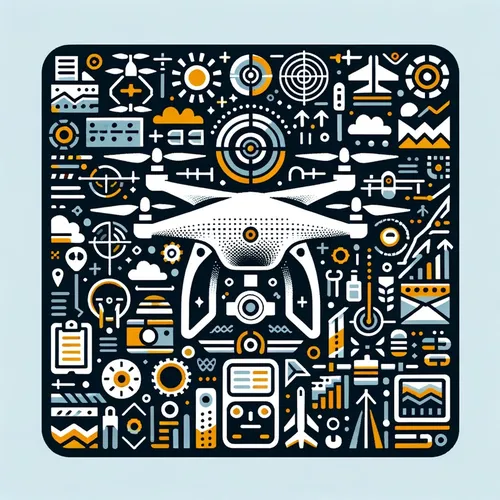Drones, Regs, & Riches: Soaring Profits, Sinking Costs, and the FAA's Iron Fist
- Author
- Quiet. Please
- Published
- Wed 13 Aug 2025
- Episode Link
- https://www.spreaker.com/episode/drones-regs-riches-soaring-profits-sinking-costs-and-the-faa-s-iron-fist--67353956
This is you Professional Drone Pilot: Flight Tips & Industry Updates podcast.
As professional drone pilots prepare for another day in the skies, mastering advanced flight techniques remains central for maximizing both safety and efficiency. Precision approaches using manual and automated controls are now standard, but continuous learning is essential. Practice coordinated yaw and banking for smooth cinematic shots, and always pre-program failsafes before conducting complex inspection or mapping operations. Adaptive flight paths that dynamically avoid obstacles are increasingly supported by the latest artificial intelligence and lidar technologies, a trend highlighted in recent features at Dronefly and Lucid Bots, where modular payloads and automated sensor selection are transforming field workflows.
Equipment maintenance is your silent partner in operational reliability. Drone Life reports that predictive maintenance—using onboard diagnostics, data analytics, and machine learning—is reducing downtime and preventing costly repairs. Scheduling routine sensor calibration, battery health checks, and firmware updates is crucial as drones become more specialized and integral to commercial infrastructure work. The industry is moving towards a drone-as-a-service model, integrating maintenance into comprehensive operational packages and emphasizing eco-conscious repair practices.
The market for commercial drones remains robust, with building inspection, agriculture, and logistics driving adoption. According to Archive Market Research, the drone maintenance service sector is projected to grow at an annual rate of 5.3 percent through 2033 as more businesses recognize the cost savings and operational advantages. AI-powered imaging and automated defect detection, especially for urban and high-rise inspection, continue to open new business opportunities—recent breakthroughs in New York City building maintenance showed savings of up to one hundred twenty thousand dollars by spotting issues before major damage occurred.
Certification and licensing remain core requirements for legitimacy and compliance. The Federal Aviation Administration, as of 2025, mandates an initial drone pilot knowledge exam and recurrent training every two years. Registration fees rose to ten dollars in April, and advanced operations certificates are now mandatory for flights in controlled airspace or close to urban populations, including new in-person flight reviews as detailed by ABJ Academy and Grepow.
Pricing strategies require a nuanced approach. For specialized services such as thermal mapping, cost-plus contracts covering pre-flight planning, insurance, and post-flight analysis are increasingly common. Insurance is not just advisable—it is predominantly required for commercial operations, reflecting elevated liability risks. Providers are incorporating detailed inspection data into compliance and risk management documentation for clients.
Weather remains a daily challenge. Use hourly updates from multiple sources and factor in the effects of wind, precipitation, and temperature on drone performance, especially when planning missions that require low-altitude hovering or flying in urban wind tunnels.
Current news highlights include Lucid Bots announcing next-generation cleaning drones with enhanced AI navigation, the expansion of modular drone platforms across utility providers for rapid sensor changes, and regulatory updates from the Federal Aviation Administration tightening Remote ID requirements for all commercial drones.
Looking ahead, expect machine learning to further automate payload management and mission planning, pushing the industry towards streamlined fleets and even greater cost efficiency. Sustainability pressures will make responsible maintenance and disposal practices an operational necessity.
Practical takeaways for today: Set up predictive...
